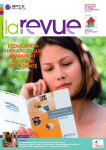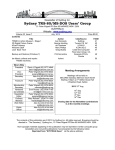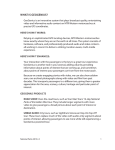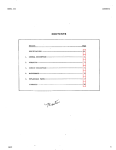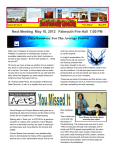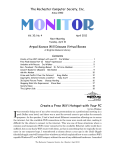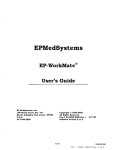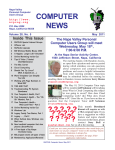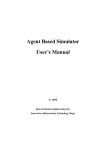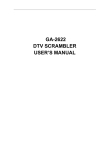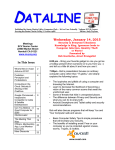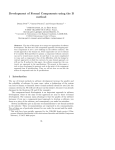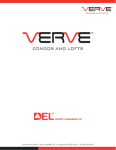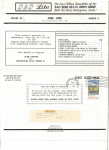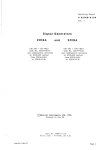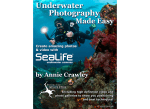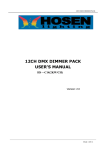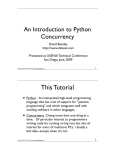Download Dupe & Dump Lite February 1994
Transcript
SAN DIEGO
Formerly Heath/Zenith SDHUG
o
D
~
Under the Computer
Hood User's Group
COMPUTER SPOKEN HERE
Come Look With Us
Under the Computer Hood
HAPPY GROUND HOG DAY
BOARD MEETING
Home of
Wil Wakely
This Month's
Meeting
is
Wednesday, FEB 2nd at 7:30PM
Kearny Mesa Recreation
Center
3170 Armstrong
Street,
San Diego
SAN DIEGO
PROGRAM
WORD 6.0 For DOS
By
Mike Trempe -
FIRST CLASS MAIL
UNDER THE COMPU1ER HOOD USER'S GROUP
TIME CRITICAL· PLEASE EXPEDITE
Post Office Box 83341
San Diego, CA 92138-3341
ARE YOU ABOUT TO EXPIRE
??
Please check if your label
below is HIGHLIGHTED
---
ARTHUR w. GRESHAM q -~o7-(}r.'--15215 LUIS ST.
POWAY CA 92064-2628
\~---------------
~~
.
Page 2 -- S.D. UCHUG'S DRIVE Lite"-- FEB 1994
Newsletter of the San Diego Under the Computer Hood User's Group
President's Corner
By Sandy Shapiro
Look under your computer's hood
and one thing you will find is an
operating system.
What is an
operating system?
The operating
system is a list of instructions
that lets you and your computer talk
to each other. Before we had floppy
disk drives, basic input and output
(I/O) was simpler. Often a teletype
machine served both functions. Then
came keyboards and monitors with
cassette tapes storing information
and instructions.
The advent of
floppy disks made a disk operating
system (DOS) necessary.
My first disk operating system
was "SS-DOS" from Smoke Signal
Broadcasting Company. I used it on
a computer with 40 K of RAM and two
floppy disk drives. A new XT type
of computer brought a succession of
MS-DOS
versions,
each
version
performing more complicated tasks
and needing more memory and more
disk storage space. The increasing
complexity
brought
third
party
enhancements like QEMM.
The
struggle
to
improve
productivity generated a series of
programs that let users do two or
more tasks at the same time:
windows, GeoWorks and Desqview, for
example.
The price for this
increased productivity, however, was
decreased stability and reliability.
Then came IBM's OS/2 version 2.1, a
robust
operating
system
that
provides both efficient multitasking
and reliability. But the price for
running OS/2 is in hardware - more
RAM and larger hard drives are
required.
The
San
Diego
UCHUG
will
demonstrate OS/2
at the April
meeting.
IBM is letting us use
their
meeting
room
with
its
excellent VGA projection system.
This will be the first time in my
memory that we will NOT be meeting
----continued around the Corner----
SAN DIEGO
UNDER THE HOOD USER'S GROUP
A User's Group Membership
Affiliated with San Diego Computer
Society
Membership in S.D. UCHUG is open to
any person interested in computers.
Dues are $15 per year.
The
Membership Chairman will happily
accept your application at any
meeting, by mail or by phone.
Please make checks payable to MR.
ABBOTT
BROWNELL,
Treasurer(S.D.
UCHUG). Participation in the Disk
Of The Month program will give you a
disk
full
of
new
and
useful
shareware programs each month. For
an additional $10 per year you will
receive 12 disks.
=======================
1993 - S.D. UCHUG - 1994
EXECUTIVE BOARD
Pres---Sandy Shapiro-------454-2341
VP-----wil Wakely----------274-6043
Sec----Greg Skalka---------484-7024
Tres---Abbott Brownell-----698-1506
Lib----Bob Woods-----------486-4485
Ed-----Ray Ferbrache-------275-2718
O-a-L--(Membership)
Art Gresham---------748-9396
O-a-L--Larry Barnes--------536-8678
O-a-L--Larry Crumb------_---278-4083
O-a-L--Al Brengle----------588-0674
P-Pres-Bob Sanders---------463-1359
======================
The newsletter DRIVE LITE is published monthly by the SAN
DIEGO UNDER THE HOOD USER'S GROUP primarily for S.D. UCHUG
members. Copyrighted material may be reproduced with the
written permission of the copyright holder. Other contents
of DRIVE LITE may be reproduced for non-commercial purposes
only if appropriate credit is given DRIVE LITE and the
author AND a copy of the publication is supplied to S.D.
UCHUG.
Submissions of interest to computer buffs are welcome. All
authors and sources must be identified. Copyrighted
material can be accepted for reprint only if permission of
the copyright holder is included. The DRIVE LITE Editor
employs WordPerfect for Windows or DOS 6.0 to prepare the
text. Any Major Wordprocessor or straight ASCII text can be
utilized.
S.D~ UCHUG'S tiRIVELite -- FEB1994 -- Page 3
Newsletter of the San Diego Under the Hood User's Group
Presidents Corner continued -----
r---.
_...:
the Kearny Mesa Rec. Center. I
know that on the first Wednesday of
each
month,
our
members
automatically head for the Rec.
Center.
So we will have several
reminders
that,
on
the
first
Wednesday in April, we will meet at
the IBM building, 8845 University
Center Lane.
This is in La Jolla at the Nobel
Drive exit off Interstate 5 North
(just north of the new Mormon
temple) .
If you are coming from
south of UCSD, take 1-5 north to
Nobel drive exit and stop at the
first traffic light.
The IBM
building will be immediately in
front of you.
If coming from the
north, exit 1-5 at La Jolla Village
Drive East. Go to Lebon Drive, turn
right to Nobel. Then turn right to
the light (just before the freeway)
and turn right into the IBM parking
lot. Parking is free. The meeting
is on the second floor in room 209.
~e room holds 90 people, so bring
.me friends.
SECRETARY'S REPORT, GENERAL MEETING
5 JAN 1994
Greg Skalka, Secretary
January D & D Lite were sent out. A
copy was sent to the editor of
Personal Systems. The deadline for
submittals to the February edition
was set at January 25th. It was
suggested that we change the name of
the newsletter, since the group's
name has changed. Suggestions were:
Tool Box and Timing Light.
Membership:
The
number
members
dropping out of the group each year
has been decreasing over the last 7
years: 16 lost in 1987, 13 in 1988,
14 in 1989, 10 in 1990, 5 in 1991, 6
in 1992 and 3 dropped out in 1993.
Librarian: The January Disk of the
Month contains DOS utilities, HD
Info
(contains
hard
drive
specifications)
and
Windows
utilities,
including
WIZMAN.
WIZMAN puts a configurable and
selectable
toolbar
into
file
manager.
Other utilities provide
3-D buttons and permit groups of
groups.
The library will now be
going to 1.44M 3.5" disks.
Future presentations:
February: Mike Trempe on Word for
Windows 6.0
March: Open
April: Sandy on OS/2 at IBM
The meeting was called to order at
7:37 PM by President Sandy Shapiro.
Fifteen members were in attendance.
Old business: None
Reports:
The evening's presentation was by
Al Brengle (standing in for Gary) on
the $25 Network .. The $25 Network is
a software package that allows 2 or
3 computers to be networked together
using nul modem cables.
The same
company (IMODES) also makes Little
Big LAN, for connecting more than 3
computers. using the $25 Network,
computers can share a printer. Any
networked machine can use all the
resources of another machine on the
network.
Drives can be shared on
the network or excluded from it.
One machine is the server in a
3-machine network (the other two
connect
to
it).
The
RS-232
connection spec is up to 50 feet,
Past President: No comments.
Vice-President: wil informed the
Computer society of our name change.
He found out that the editor may
put the newsletter on their BBS,
and is looking into the use of their
VGA display panel.
Secretary: The December minutes were
accepted as read.
.
Treasurer: $1178.82 in the account.
~di tor:
Thirty-two member and 9
copies of the
rchanqeycomp.l emerrt.ar-y
New Business: None
Page 4 -- S.D. UCHUG'S DRIVE Lite
FEB 1994
Newsletter of the San Diego Under the Computer Hood User's Group
but it would probably work up to
around 100 feet (probably several
hundred feet with repeaters). Files
may be transferred and programs may
even be run off of remote networked
drives.
The January board meeting will be
hosted by Sandy Shapiro (Jan. 19th).
The meeting was adjourned at 8:56
PM.
Society in this form only.
Membership:
Presently
at
members,
with two
overdue
renewal and several coming up
renewal in the next few months.
Librarian: In addition to the DOM, a
two-disk set of the 3-D action game
DOOM will be offered for sale at the
next general meeting.
Future general meeting programs:
SECRETARY'S REPORT, BOARD MEETING
19 JAN 1994
Greg Skalka, Secretary
The meeting was called to order at
the home of Sandy Shapiro at 7:43
PM by President Sandy Shapiro.
Officers in attendance were Sandy
Shapiro, Greg Skalka, Al Brengle,
Bob Woods, Larry Crumb, Bob Sanders,
Ray Ferbrache, Art Gresham, Wil
Wakely and Abbott Brownell.
Reports:
Past President: No comments.
Vice President: A $6.00 per member
per year saving would result by
members obtaining their D & D by
modem, rather than through mailed
printed copies.
This could be
offered as a reduced-cost membership
option. wil had no answer yet on
the use of a VGA projection pad
belonging to the Computer Society.
Secretary: The minutes
of
the
January
general
meeting
were
accepted as corrected.
Treasurer: $1198.82 reported in the
account.
Audit
results
were
presented to the board. Art Gresham
will cross-check membership payments
received to each of the members.
Editor:
32
member
and
9
exchange/complementary copies
of
January issue sent. February issue
deadline is January 25th.
The
January issue was uploaded to the
Computer Society BBS.
Future
issues will be sent to the Computer
Feb: Mike Trempe on Word 6.0
March: Ray Ferbrache on Kiplinger's
Money
Manager
(may
need
VGA
projection pad)
April: Sandy Shapiro on OS/2 V2.1
at IBM building, 8845 University
Center Lane (across from the Mormon
Temple), pending VGA projection
capability May: Modem demonstration
by Abbott?
Suggestions
for
other
future
presentations: CD ROMs, Little Big
LAN (LAN program), virtual reality,
Pentium and Power PC processors.
~,
Old business: Newsletter names. In
keeping with the new
organization name, the board will
change the newsletter name
to "Drive Lite".
New business: None.
The February board meeting will be
hosted by wil Wakely (Feb. 16th).
The meeting adjourned at 8:35 PM.
THEY GET YOU BY THE
SERVICE
By Sandy Shapiro
San Diego Under the computer Hood
Users Group
I can't resist a barqain.
At
last fall's Computer Fair
Borland
was practically giving away QUATTRO
Pro Version 5, their latest spread
sheet program. I use an old version
of Excel (version 2), and this was
my opportunity to upgrade to a
"modern" spreadsheet program at a \
reasonable price.
S.D. UCHDG'S DRIVE Lite -- FEB 1994 -- Page 5
Newsletter of the San Diego Under the Hood User's Group
Borland now charges for technical
~lpport. But I can read the manual,
_,1d unless there is a bug in the
program, I rarely need to call
technical support.
Now Borland
wouldn't release a buggy program and
expect me to pay for getting help,
would they? Or would they?
have the charge go on my telephone
bill.
"But there is a bug in the
program," I complained, "I would
rather switch back to Excel than pay
for support for a bug!"
"That is
your privilege," Rebecca shot back.
I bought the program and stuck it
in a drawer until I could find time
to play with it.
When that day
finally came,
I
installed the
program and ran the tutorial.
It
worked well and I was impressed.
When I felt comfortable with the
program I decided to move all my
Excel files over - I don't need to
keep two spreadsheet programs on my
hard drive. Then I found the bug.
When I cooled down, I found
Borland's number for reporting bugs
and sent them a report.
That was
two weeks ago, and there has been no
response. In the meantime, I found
that if I export my Excel files as
Lotus ".wk1" format, then QPW will
import them correctly, dates and
all.
But I do not have the
motivation to go back and start
converting all my Excel files.
Maybe I will take a look at the new
Excel upgrade offer.
The manual states that QUATTRO
Pro for Windows (QPW) will import
Excel files (".xls") automatically.
No special instructions are given.
To my surprise, I found that only
dates through 1989 would import
correctly.
Dates
after
that
~-l:mportedsomewhere in 1800.
For
{ample, December 31, 1993 ended up
as July 27, 1814.
No amount of
formatting or reformatting helped.
I am reminded of the story of the
business man looking for a hotel in
Hawaii.
His friend recommended a
new resort where the rooms were only
$5.00 a night and included a great
golf course. The man checked into
the hotel and said: "¥ou mean these
wonderful rooms are only $5.00 a
night
and golf is included?"
"That's right," said the clerk.
"Have a nice stay."
So I called Borland technical
support, and my nightmare began.
Borland is a long distance call, and
I was immediately put on hold. Then
an operator came on line and spent
several minutes
explaining
the
various ways
I could pay for
support. I could get free support
only for setting up and configuring
QPW.
My problem could be loosely
construed as having to do with
configuration, I said, and I finally
was connected with Rebecca.
The man grabbed his golf clubs
and headed for the golf course.
"This is beautiful," he_said to the
golf pro. "And you mean there is no
charge?" "No," said the pro, "Have
a nice game." "I need a package of
golf balls," the man said. "The pro
shop is right over there," the pro
said, "They will have what you
need."
The man ran into the pro
shop and said: "Quick, give me a
package
of three golf balls."
"certainly, sir," the clerk said,
"And that will be $3000.00
$1000.00 per ball." . "$1000.00 a
ball," the man exclaimed, "Why that
is outrageous."
"¥es sir," the
clerk said, "Here they get you by
the balls."
After
I
again
explained my
problem, Rebecca said: "If you can
get to a QPW window, Sampson," (I
told her my name was Sanford) "then
I can't help you." "We 6nly offer
free help with installation," she
said. She then went on to explain
that I could call an 800 telephone
/number and pay with my credit card,
-:I could call a 900 number and
Borland
service.
now
gets
you
by
the
Page 6 -- S.D. UCHUG'S DRIVE Lite"-- FEB 1994
Newsletter of the San Diego Under
the Computer Hood User's Group
....•
CLEM'S C-LINE
by Clem Pepper
~I~~---------------------------------
Copyright (C) January 11, 1994
by Clement S. Pepper
I recently bought another book.
Anyone who knows me at all will not
be surprised; when it comes to books
I am an easy touch. The title of
this book is "Strange Attractors Creating Patterns in Chaos" by
Julien C. Sprott. Basically the book
provides a technique for generating
fractals using a rather elaborate
mathematical approach.
As to a practical value for this,
I
think
that
depends
on
the
individuals interests and education.
For me it is just a bit of simple
programming enjoyment. The author's
opening paragraph says it best: "Art
and science sometimes appear in
juxtaposition, one aesthetic, the
other analytical. This book bridges
the two cultures. I have written it
for the artist who is willing to
devote a modicum of effort to
understanding the mathematical world
of the scientist and for the
scientist who often overlooks the
beauty that lurks just beneath the
simplest equations."
What the book does is present a
unique approach for generating a
class of fractals called "strange
attractors."
The
first
chapter
includes
a
discussion
on
"deterministic"
laws
of
nature
versus
"probabalistic",
quantum
mechanics, for instance. It is now
understood that deterministic is not
the
same
as
predictable.
Unpredictable
behavior
of
deterministic
systems
has
been
called "chaos." Chaotic processes
are not random, they do follow
rules. But even simple rules can
produce extreme complexity. Which is
what this book is all about.
The
author discussion begins with a
simple equation:
Xn+l = RXn modified to Xn+l = RXn(l-Xn)
)C
Bifurcation diagram for the
logistic equation, XnH = RXn( i.-x.)
The complexity of the equations
increases chapter by chapter, as do
the
screen
representations
on
running the programs.
Three-Dimensional Quadratic Map with
Contour Bands
In proceeding through the text
the plot
complexities
evolve
through a sequence of twenty six
BASIC program fragments. That is,
S.D. UCHUC'S DRIVE Lite -- FEB 1994 -- Page 7
Newsletter of the San Diego Under the Hood User's Group
each new segment is a BASIC sequence
~th the name PROG*.MRG. PROG01.MRG
w~ll run as PROG01.BASi in fact with
my QBASIC it will run without the
•BAS
extension. As
the
author
explains
each
new
level
of
mathematics the corresponding .MRG
file is integrated into all that has
gone before. The programs use line
numbers,
which
are
not
a
requirement, but make it much easier
to integrate each new segment into
the total.
At
this
time
I am
up
to
PROG05.BAS which displays a variety
of two-dimensional quartic maps. (I
am including photocopies of typical
runs.) This program also includes
sound
effects.
At
first
I·
considered these to be an annoyance,
but it turns out there is a real
value in that the sound stops when
the screen mapping is complete.
without the sound the completion is
not easily detected due to the
random
nature
of
the
pixel
appearances.
/<;
You can see from the initial
program what the general format is
like.
Confusing.
Variable
definitions are vague at best.
10 REM PROG01.BAS
1000 REM LOGISTIC EQUATION Xn+1 = RXn(l-Xn)
1010 DEFDBL A-Z
'Use double precision
1030 SM% = 12
'AssumeVGA graphics
1190 GOSUB 1300
'Initialize
1200 GOSUB 1500
'Set parameters
1210 GOSUB 1700
'Iterate equations
1220 GOSUB 2100
'Display results
1230 GOSUB 2400
'Test results
1240 ON T% GOTO 1190, 1200, 1210
1250 CLS
1260 END
1300 REM Initialize
1320 SCREEN SM%
'Set graphics mode
1350 WINDOW (-.1, -.1)-(1.1, 1.1)
1360 CLS
1420 RETURN
1500 REM Set parameters
1510 X = .05
'Initial condition
1560 R = 4
'Growth rate
1570 T% = 3
~90 LINE (-.1, -.1)-(1.1, 1.1), , B
30 RETURN
1700 REM Iterate equations
1720 XNEW = R * X * (1 - X)
2030 RETURN
2100 REM Display results
2300 PSET (X, XNEW)
'Plot point on screen
2320 RETURN
2400 REM Test results
2490 IF LEN(INKEY$) THEN T% = 0 'Respond to user key
stroke
2510 X = XNEW
'Update value of X
2550 RETURN
When run the screen map bears a
close resemblance to a clipped
parabola. The screen appearance when
running these programs reminds me of
the stars appearing in the slowly
darkening sky. The appearance of
pixels is random, now here, now
there, now somewhere else, slowly
filling in the gaps until the
pattern is complete.
I wrote a C program to get a feel
for the opening equation using a
value of 4 for R.
/*
** MATHEX4.C 1-5-94
** Calculations of equation 1C, p7 of strange Attractors
** R assigned a value of 4.
*/
#include <stdio.h>
/* = Begin Program = */
main()
(
float y, x;
int R = 4;
/* ** Solve equation y = R * x * (I-x) ** */
for(x = .05; x <= 1.0;x+=.05) (
y = R * x * (I-x);
printf("R = %d, x ~ %4.g, Y = %4.g\n", R,x,y);
}
exit(O);
}
And here
R =
R =
R =
R =
R =
R =
R =
R =
R
R
is
4,
4,
4,
4,
4,
4,
4,
4,
4,
4,
the result when run:
x = 0.05, Y = 0.19
x = 0.1, Y = 0.36
0.51
x = 0.15, Y
x = 0.2, Y = 0.64
x = 0.25, Y = 0.75
x = 0.3, Y = 0.84
x = 0.35, Y = 0.91
x = 0.4, Y = 0.96
x = 0.45, Y = 0.99
x = 0.5, Y = 1
Page 8 -- S.D. UCHUG'S DRIVE Lite
FEB 1994
Newsletter of the San Diego Under the Computer Hood User's Group
R
R
R
R
R
R
R
R
R
=
=
=
=
=
=
=
=
=
4,
4,
4,
4,
4,
4,
4,
4,
4,
x
0.55,
0.6,
x = 0.65,
x = 0.7,
x = 0.75,
x = 0.8,
x = 0.85,
x = 0.9,
x = 0.95,
x
=
Y
Y
Y
Y
Y
Y
Y
Y
Y
0.99
0.96
0.91
0.84
0.75
0.64
= 0.51
= 0.36
= 0.189999
=
=
=
=
=
=
Observe the symmetry around y =
1.
This
explains
the
quasiparabolic shape of the screen map.
The author does provide a BASIC
program in the appendix for the
entire text. He has also converted
it to Microsoft C and Turbo C,
version 2.0. (He calls it C++, but
it really isn't.) When I first
attempted to compile the program the
compiler pointed out the lack of the
graphics enable, initgraph(). A
rather curious shortcoming. I have
written a header file to carry this
out, so the fix was relatively
easy. When run the program provides
an endless display of maps. A
completed map remains visible for a
few seconds, then the screen blanks
and a new construction begins. The
procedure for the later screens
repeats indefinitely with new maps
until pressing a key exits the
program. So this could be of use as
an intriguing screen saver.
One side effect of the book has
been to lead me into an exploration
of my Epson LX-80's control codes.
Because the pixels are randomly
displayed on the screen they cannot
be redirected to the printer. But if
there is a way to put the printer
into a graphics mode such that Print
Screen could reproduce the completed
map that would be good. To date I
have not figured out how to do this,
however.
The user manual for the
Epson printer is very thorough, with
a detailed description. of the
control codes required for all its
operating modes. (The Epson is a de
facto standard, so the codes are
true of most dot matrix printers
and, it would
appear, my Canon
bubble jet.) Several years ago I
wrote a program, PRNTSET.C that
provides for keyboard setting of any~
of its five print modes: NLQ,~~
Emphasized,
Elite,
Compressed
Elite, and Compressed. I have made
several attempts at writing a code
to put the printer into its graphics
mode without success so far. The
closest I have come to results is a
string of unintelligible dots. But I
keep trying.
One earlier objective was to
printout
from
the
high
ASCII
character set. This so that boxes
created by ALT nl,n2,n3 in PC write
would not only appear on the screen,
as they do, but printout as well. I
wondered why these always came out
as italics until my digging through
the
manual
showed
that
Epson
internally translates high ASCII to
italics. Even so, a program I have
from long ago, LETTRIX, does print
the entire set, along with much,
much more. So it can be done, but I
suspect
it creates
a graphics
representation. which is what I
would like to work out for myself.~
Given more time and effort it might
happen yet. A matter of finding the'
correct approach.
I have made reservations that
should bring me to San Diego on the
afternoon of January 24-. So if all
goes as planned I shall be Cing
y'all at the February meeting!
«C»
I~--------------------~I
-W-O-M-
WOM = Write-Only Memory
supposed to ignore it.)
(You're
by 01' whiteBeard, Hissef
IT'S OK TO LET GO OF CP/M ...
The other day I was in the bathroom
~hen the phone rang. Not to worry: I
have'a phone in the john for just
such eventualities. The conversation
(and my thoughts) went something
like this:
"Hello."
"whiteBeard Computer consulting?",
(an unfamiliar voice)
S.D. UCHUG'S DRIVE Lite -- FEB 1994 -- Page 9
Newsletter of the San Diego Under the Hood User's Group
"Uh, yes." (I was wary of a
lephone solicitor.)
"I've got"one of your computers!"
"Uh, yes" (Confused: I couldn't
envision what he was talking about.)
"It's got your label on it."
"OK..." (My label? Curious.)
"I have a couple of questions."
"OK." (What could it hurt to
answer a couple of questions? I
almost always answer questions. I am
the kind of guy who, when you ask
what time it is, feels compelled to
try to make sure you understand how
a watch is made, the units by which
time is measured and, if even
slightly encouraged, the origin of
the very concept of time itself.)
"I don't have a manual and what
size disks should I buy."
"What kind of computer is it?"
(For a moment I was afraid he was
gonna say "It's a WhiteBeard. Don't
*you* know?")
"It's an Eagle."
"The disks you need are five and a
quarter-inch double density -- not
high density -- double density. And,
~re
importantly, you'll need an
)erating system ..." (I started to
explain that I'm willing to give him
a copy of CP/M for the Eagle but I
could copy it only on an appropriate
Eagle
machine
when
he
interrupted me.)
"What size disks should I buy?"
"Five and a quarter inch." (Quit
tryna help so much. Just address the
presented question.)
"Five and a quarter inch..." (It
seemed like he was writing.)
"Yes. I don't have a manual I'll
give up but if you'll call me back
in, say, ten minutes (I was in the
bathroom, remember) -- better yet,
give me your number and I'll call
you -- I'll steer you to the last
outfit I know of that supports Eagle
computers. And, ah, can I ask how
you came by this computer?"
"I found it in a trash bin! I
plugged it in, turned it 'on and it
works!"
A few minutes later I called the
~umber he gave and fed him the info
n Wilkinson Micro in Irvine (CA),
the last supporter I know of for
Eagle computers. I had to spell out
W - I - L - K - I - N - S - 0 - N
twice (slowly) and I began to get an
image of a second grader printing
laboriously.
And, I swear to Gates, the very
next day he called me and asked the
same questions again!
He said he
lost what I'd given him the day
before and wanted to know what size
disks to buy and where to get a
manual.
Now I've helped a lot of new
computer users -- used to do it as a
business -- and I've generally found
it very rewarding. I must be getting
curmudgeonly in my dotage because I
decided rather quickly it would be a
substantial uphill battle to try to
help this guy. And after struggling
to get the machine running and him
up to speed, he'd come to realize
it's capability is ridiculously
outmoded
compared
to
today's
baseline machines. He'd learn the
reason it was in the trash is it's
so obsolete it not ohly has zero
salvage value, no knowledgeable
person will even take it away for
free. I see, now, the pitfall in
putting a sticker with my phone
number on machines I supported.
In the past year I've had a
number of other strange calls: An
old acquaintance now living in
Arizona, called long distance to ask
if I knew where someone could get a
replacement har~ drive for a KayPro
10. Remember the portable with a
10Mb hard disk spawned from the
redoubtable CP/M luggable produced
by the now defunct company? Pundits
said you couldn't put a hard drive
in a portable without elaborate
shock mounting but KayPro did it and
sold a few before they folded.
Right. Neither do I.
A number of calls have been
referred to- me from the old SDHUG
listing in ComputorEdge. One I
recall was from a guy who had just
acquired, at a swap meet I think, a
Page 10 -- S.D. UCHUG'S DRIVE Lite -- FEB 1994
Newsletter of the San Diego Under the 'Computer Hood User's Group
Columbia computer (remember those?)
and needed an operating system for
it.
Of
course
you
old-timers
remember
that,
unlike
MS-DOS
machines, every CP/M computer had
the BIOS portion of the operating
system specifically tailored to its
particular design. Although, with
appropriate software, one could read
and write diskettes
for other
machines,
one
could
not,
for
instance, use a Heath machine to
make a bootable diskette for a
K~yPro.
Another recent call was from the
proud new owner of a TeleVideo
computer. He wanted CP/M programs
and was referred to me as keeper of
the
SDHUG
CP/M
library.
He
understood you put the program disk
in the A: drive and the data disk in
the B: drive. When I tried to
explain about the need for an
operating system he became very
confused and confessed he was "new
at this". "If I put the program disk
in A: and the data disk in B:, where
do I put this 'operating system'?"
As I began to explain to him about
making bootable program disks I
realized the futility of it all
since I have no idea where to get a
bootable
CP/M
disk
for
the
TeleVideo. As I have with other CP/M
seekers I was unable to help, I
referred him to Worswick Industries,
a local San Diego firm which has
sometimes offered support for CP/M
machines. Worswick probably hates me
by now since he probably couldn't
help these folks any more than I
could.
There was a time when I believed
an old CP/M computer was a good
place for a beginner, especially one
on a low budget, to start since it
would be adequate for straight
forward tasks such as simple word
processing, etc. And I realize I
gave up that belief a long.time ago.
Now, I think such an idea is a
downright disservice to a neophyte
user. The old machines are still
adequate for many things, and a
knowledgeable user might effectively
employ one for specialized tasks
such as a printer server. But, the
hardware
has
evolved
and
the
computer community has progressed~
several stages -- generations, if
you will -- beyond those venerable
old machines and we must give them
up -- leave them behind -- relegate
them to a few specialized tasks or,
indeed, to the scrap heap. Even the
8088-based peesees and XT's, not to
mention the, superb for its day,
Z-100, are hopelessly outclassed.
The
recipient
of
an
obsolete
computer
is
likely
to
spend
significantly more on getting it
running than he paid
for the
computer in the first place and
almost as much as a generation newer
machine would cost. And when he
finds out there aren't any really
good games for it and it won't run
anything like the killer software he
hears everyone talking about, he'll
feel ripped off.
The last time I fired up The
Mule, my trusty, heavily tricked-out
Heathkit H-89, was about a year ago.
And at that time I couldn't access~
my multiplexed floppy drives rrom.;
the soft-sector controller. So I
have lost my capability to convert
between
Heath
hard-sector
and
soft-sector disks. At the present
rate of things, I may never get to
fixing it.
At the last meeting of the UCHUG
Executive Board, I requested that we
remove any reference to CP/M from
our
ComputorEdge
and
Personal
Systems listings and give up any
pretense of offering to support CP/M
because the only requests we have
received in the last couple of years
we haven't been able to help anyway.
The Board agreed (and also decided
to consign the highly touted SDHUG
CP/M Library to Ol' WhiteBeard 's
custody until he gets tired of it.)
I will continue to store the
library (probably forever) and will
continue to help, informally, users
who appreciate the value and the
limitations of obsolete machines.~
Newsletter
S.D. UCHUG'S DRIVE Lite -- FEB 1994 -- Page 11
of the San Diego Under the Hood User's Group
But it's time to quit offering hope
users where they don' t
h.10W what they have, what they need
or what they want and will require
major education just to corne up to
speed on an old computer.
7.
- r>. potential
8.
I will if you will.
9.
I WISH I'D SAID THAT ...
10.
"PAPER OR PLASTIC?"
11.
The Lady Marcia always gets upset
with me when I answer that importune
checkout question with a simple
"Yes."
Now, with credit cards almost
universally accepted, I really want to
counter the question with a question:
12.
13.
14.
"TO PACK OR TO PAY?"
15.
--ASB-16.
I•••••••••••••••••••••••• ,
FROM THE EDITOR'S
~_.JWBIG IS 1 MILLION
DESK
17.
? ? ?
A man from Indiana wrote a program
to print all the numbers from 1 to
1,000,000.
The program took 7 hours
per day for 2 weeks to print 2,400
pages weighing almost 50 lbs.
18.
===================================
Barfergnugen:
Volkswagen.
Car
Sickness
in
a
===================================
TAKE MY ADVICE I DON'T USE IT ANYWAY!!
===================================
19.
20.
21.
BBS CREED
1.
2.
3.
4.
5.
Thou shall love thy BBS with
all thy heart and all thy
bytes.
Thou shalt remember thy name
and password.
Thou shalt not POST IN ALL CAPS!
Thou shalt use thy real name.
Thou shalt only call a BBS two
times a day.
Honor thy SysOp. /* Unless his
last name is Padilla */
22.
23.
Thou shalt not covet thy
neighbor's password, nor his or
her real name, computer,
software, nor any other thing
belonging to him or her.
Thou shalt not post messages
that are stupid, worthless, or
have no meaning.
Thou shalt use the English
language properly.
Thou shalt spell thy words
correctly.
Thou shalt not use a "handle"
unless thine computer is made
by Commodore (or allowed by
thine SysOp).
Thou shalt delete thine olden
messages.
Thou shalt help other users.
Thou shalt not post anonymously
when offering criticism.
Thou shalt keep thy foul
language to thyself.
Thou shalt not occupy thy BBS'
with thine arguments, for
Verily, I say unto thee that
thou shalt maketh a fool of
thyself.
Woe be unto the user who attempt
to crash thy BBS, for he shalt
be cast out from the sanctuary
of thy hobby and must repent by
doing 40 days and 40 nights of
penance of voice-only
communications.
Thou shalt first dial BBS
numbers during the day by way of
voice line to assure correct
numbers.
Thou shalt not beg for E-Mail.
Thou shalt not post messages
while drunk._
Thou shalt confine thy messages
to those of friendship, requests
for assistance, aid to the
needy, advice, and advancement
of thy hobby; and thou art
obligated to repel any who
wouldst transgress upon those
commandments.
If thou doth promise to reply to
a message and thou doth not,
then surely thou shalt spill
coffee into thy keyboard and
burn out thy central processing
chip.
Thou shalt not giveth any false
Page 12 -- S.D. UCHUG'S DRIVE Lite -- FEB 1994
Newsletter of the San Diego Under the Computer Hood User's Group
24.
25.
26.
27.
28.
29.
information when applying for
membership to a BBS, for verily
it is written that whosoever
shall do so will surely be found
out and thy welcome on all
boards will be thus denied
forever and ever.
Thou shalt log on properly and
in accordance with the SysOp's
rules.
Thou shalt observe BBS time
limits.
Thou shalt not upload "worm"
programs.
Thou shalt not ask stupid
questions that are already fully
explained in the BBS
instructions.
Thou shalt not exchange copy
protected software thru the BBS.
Thou shalt not violate
applicable state/federal/local
Rules and Laws of the great BBS.
This Gem came from Miwok Village,
Alaska,
via
the
ChitCHATan
conference on the RELAY net.
===================================
MAXTOR 345 MB Hard Drive information
from the BBS.
Recently purchased a Maxtor 345 MB
without any paperwork. Does anyone
know the CMOS particulars for a user
defined HD for this drive?
Default
AT
BIOS
Parameters:
Cylinders: 790; Heads: 15; Sectors
Per Track: 57
(Note: WPC and Landing Zone BIOS
entries do not need a specific
number for proper operation. Maxtor
AT interface hard drives will ignore
and
override
any
numbers
programmed.)
Looking at the circuit board side of
the drive, with the connectors
toward you, there are five jumpers
in a horizontal
row, numbered
J16-J20 left to right. J20 should
have a jumper attached if this is
the only drive, or is to be the
"Master" in a dual-drive system. The
jumper should be removed when the
drive is used as a "slave" (store it,
on J19, according to the data sheet',---I have from Maxtor).
Thanks for the info; Turns out I
found an 800 number for Maxtor on
the drive and called them. They have
a neat touch tone deal where you
punch in the model of your drive and
a recording very carefully provides
all the numbers. If you touch
another number, a recording walks
you through a hard drive install.
But I sincerely appreciate your
feedback. It's nice to know folks
like you are around!
The number is 1-800-2-MAXTOR. All
you gotta do is remember the "2"
NEWS
At the ISSCC94(Integrated Circuit
- San Francisco) show in February,
Intel will release the technical
details
of
its
next
Perrt.Lum
Microprocessor, the P54C. The P54C
will be the first 3.3 Volt pe~tiu~1)
and will use Intel's 0.6 mlcron
production process.
~
The chip will also be the first
clock-doubling
Pentium
running
externally at 50 MHz and internally
at 100 MHz. They will reveal most
of the product specifications but
the chip itself and systems built
around the processor will be out
about April.
Pricing for the P54C is not out
but expect Intel to price it at a
premium to the. 60- and 66- MHz
Pentiums already shipping.
Those
chips are currently priced between
$800 and $900 in quantities.
with the shipping of the new
chip, Intel is expected to introduce
an upgrade socket that will enable
users to add a second live P54C to
their desktop systems in effect
getting a multiprocessing system.
Most of those systems are expected
to be asymmetrical multiprocessing
systems.
End of another Month as the old saying goes.













